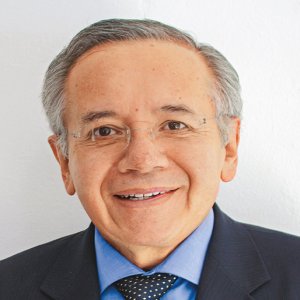Communicating at Maximum Capacity

STORY INLINE POST
Q: What is your assessment of the main advancements in Mexico over the last year toward having unified communications?
A: Honestly, we have not seen clear steps. We are in contact with the Federal Institute of Telecommunications (IFT) and we understand that the new administration is moving toward savings and cost reductions, which makes it give up valuable collaborators. We believe this phenomenon has also occurred in other government agencies, which in turn has slowed the process. The end of the last administration opened two new ways of obtaining radio frequencies. The positive inertia that this created is what has helped us so far.
Radio and IoT communications have put part of our world in the cloud by using various frequencies. This is relatively new, so there is a lack of regulation that we hope will not hinder innovation. For example, the release of frequencies allowed us to update our technologies with those of the international market. This sets the pace for future developments, such as our collaboration with a mining group in the implementation of Mexico’s largest and most modern radio communication system. This project will last about a year and a half and will enable the unified management of more than 20,000 radios.
Q: What does the industry need to know about the potential benefits of unified communications and what role does Delta Solutions play in this transition?
A: Unified radio communications allow radios to transmit on different platforms, such as Wi-Fi and cellphones. In addition, they use telemetry systems to monitor all machines in operation and thus be able to track temperature, vibration and energy. For example, the electrical indicators are delivered to the power equipment, which significantly reduces the response time in case of a contingency.
One of the innovations we offer is a turbonet system called MOTOTRBO Capacity Max. This is a trunked radio communications solution from Motorola, our main and closest ally. One of Motorola’s main production plants for this technology is located in Matamoros, Tamaulipas, and is recognized as one of the best in the world.
We have almost 33 years of experience working in this industry. We took advantage of our 30th anniversary to revolutionize the company and expand and improve our team. For example, 40 percent of our workers took a project management course to acquire new skills and knowledge. We also focus on a young and gender-equal workforce. The average age of our workforce is 32 and 55 percent of our team is female. We are convinced that our customers feel, perceive and benefit from this revolution, which in turn provides them with a better service to facilitate their own transition to new technologies. Because regulations have changed recently, we are helping mining companies not only to make the technological leap, but also to normalize all their radio communications in accordance with current legislation.
Q: What role does security play in the services you offer and where in the mining value chain do you expect further growth?
A: Although we have a security division and obtained the Top 10 Security certificate from Bosch in Mexico, we only provide radio communications systems to the mining industry, as implementation is easier. Implementing a mine security system would require a lot of human resources on our part and monitoring complications. Why do this when there is a surplus demand for security services in urban areas?
When it comes to mining, we barely have any competitors in radio communications. On the other hand, we have strategic allies. We are designing a managed services program to serve all those companies that do not want to make the capital investment but prefer to pay a fee for all their radio communications. We also offer MANTTO coverage, which completely covers any damage to our radios between three and five years. The average annual cost of this coverage is US$40 per radio compared to US$900 per radio.
























